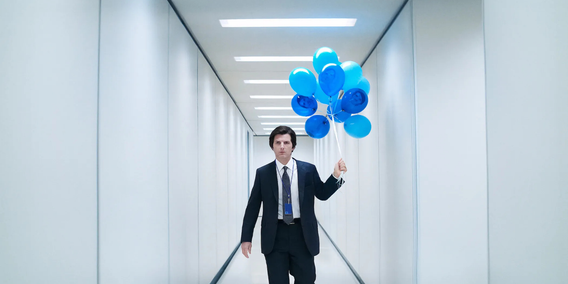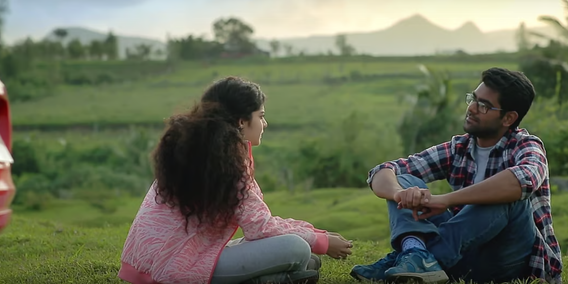"I don’t want to burn out at 28 just to buy a house I won’t even enjoy." — overheard at a Colaba café, said between sips of oat milk cappuccino and quiet defiance.
There’s a new aesthetic in town—and it’s not on the runway. It’s on your phone, your breath, your boundaries. Welcome to the Soft Life: a slow-burning cultural rebellion where therapy is a flex, rest is ritual, and peace is the ultimate status symbol.
But don’t be fooled by the Pinterest boards. The Soft Life isn’t about quitting your job and floating through Goa on a houseboat with crystals. It’s about healing in motion—choosing nervous system regulation over numbing, gentle ambition over burnout, and ease over grind.
The Great Indian Burnout
Burnout isn't new—but the way we talk about it is. In the therapy room, I’ve watched a seismic shift. My younger clients no longer aspire to the “work hard, party harder” mythology that dominated the early 2000s. Instead, there’s a hunger for sustainability—emotional, professional, relational.
"I thought I had to earn rest," said a 25-year-old software engineer during session. "Like rest was some luxury only after you’re completely depleted. But I’m starting to unlearn that."
In a country where hustle is often inherited—passed down through generations of sacrifice—the idea of choosing slowness can feel radical. For Indian women especially, raised to be both high-achieving and endlessly available, softness is a rebellion.
Rebranding Ambition
Let’s be clear: the Soft Life isn’t lazy. It’s strategic. It asks: what’s the point of achievement if your body’s falling apart and your friendships are threadbare?
This recalibration shows up in many forms:
Setting non-negotiable boundaries for WhatsApp work messages after 8PM
Saying no to unpaid emotional labour at home
Choosing slower mornings over 5AM productivity hacks
Taking breaks without guilt—and without having to announce them online
In fact, #SoftLife now has over 1.4 billion views on TikTok, as countless young users share content about choosing ease and self-care over grind mentality. Indian creators are adapting the trend—showcasing quiet days, intentional journaling, breathwork routines, or simply being present with a cup of chai and no agenda.
The Neuroscience of Slowing Down
From a clinical lens, the appeal is clear. “When you regulate your nervous system, you create a safe space for your mind to think, connect, and create,” I often tell clients. Rest isn’t idle—it’s neurobiologically productive.
When we pause, the parasympathetic nervous system kicks in—slowing heart rate, calming digestion, and allowing the body to repair. Long-term exposure to high stress (hello, hustle culture) puts us in a chronic fight-or-flight state, which impairs memory, sleep, immunity, and even empathy.
Softness, then, is not the absence of strength. It’s a different kind of muscle.
From Capitalism to Consciousness
Interestingly, many Soft Life adopters aren’t opting out of capitalism—they’re just negotiating with it on new terms.
"I still want to be successful," shared a young entrepreneur during therapy. "But now, I define success as having energy after work to talk to my mom, or feeling calm when I wake up. Not just my quarterly revenue."
This reframing of success is trickling into workplace cultures, too. The rise of four-day workweeks, therapy stipends, and mental health days (in start-ups and legacy companies alike) reflects this ideological pivot.
Even fashion is catching on. The rise of dopamine dressing, relaxed silhouettes, breathable fabrics, and “comfort-core” palettes echo this sentiment. What we wear is increasingly a mirror to how we want to feel.
The Soft Life Isn’t Always Accessible
Let’s name the elephant in the room: privilege. The ability to “opt out” of hustle or say no to toxic environments isn’t available to everyone.
For many, especially women in caregiving roles, or those navigating caste, financial, or generational pressure—softness may feel like a luxury.
Which is why, as a therapist, I often say: Softness is not a lifestyle. It’s a practice. It can begin in small, radical acts:
Pausing before reacting
Choosing compassion over perfection
Prioritizing one tiny moment of stillness in a chaotic day
These micro-decisions are the real currency of emotional sustainability.
So, Is the Soft Life Here to Stay?
In a world that glorifies doing, choosing to be is the quietest revolution of all.
And make no mistake—it’s not about bubble baths or beige Instagram grids. It’s about deciding that your worth is not tied to exhaustion.
It’s the smile of a woman who took her lunch break in silence. It’s the therapist who says, “You can rest without explaining.” It’s the quiet confidence of someone who chose themselves—and didn’t ask for permission.
Want to Try the Soft Life?
Here’s where to start:
Uncouple guilt from rest. Rest is not a reward—it’s a right.
Audit your inputs. If it stresses you out, unfollow, mute, or log off.
Make rituals, not routines. Swap hustle checklists for mindful transitions.
Ask: does this nourish me or drain me? Say yes accordingly.
Remember: Slowing down is a skill. One you can learn.
In India, we’ve always held softness in poetry, music, touch, and care. Maybe now, we’re finally reclaiming it as power.
Research links (for the curious ones)
Social media trend stats and cultural referenceselle.comstandard.co.ukstandard.co.uktheprint.inmid-day.com
Firsthand quotes from Gen Z individuals in India Today reportsindiatoday.inindiatoday.inindiatoday.in
Insights from Indian mental health experts and wellness leadersindiatoday.intheswaddle.comtimeslife.commid-day.com
Data from surveys/reports on burnout and work prioritiestheprint.inindiatoday.inindiatoday.inindiatoday.in
Commentary from Indian and international media on the anti-hustle movementelle.intheswaddle.comindiatoday.in







